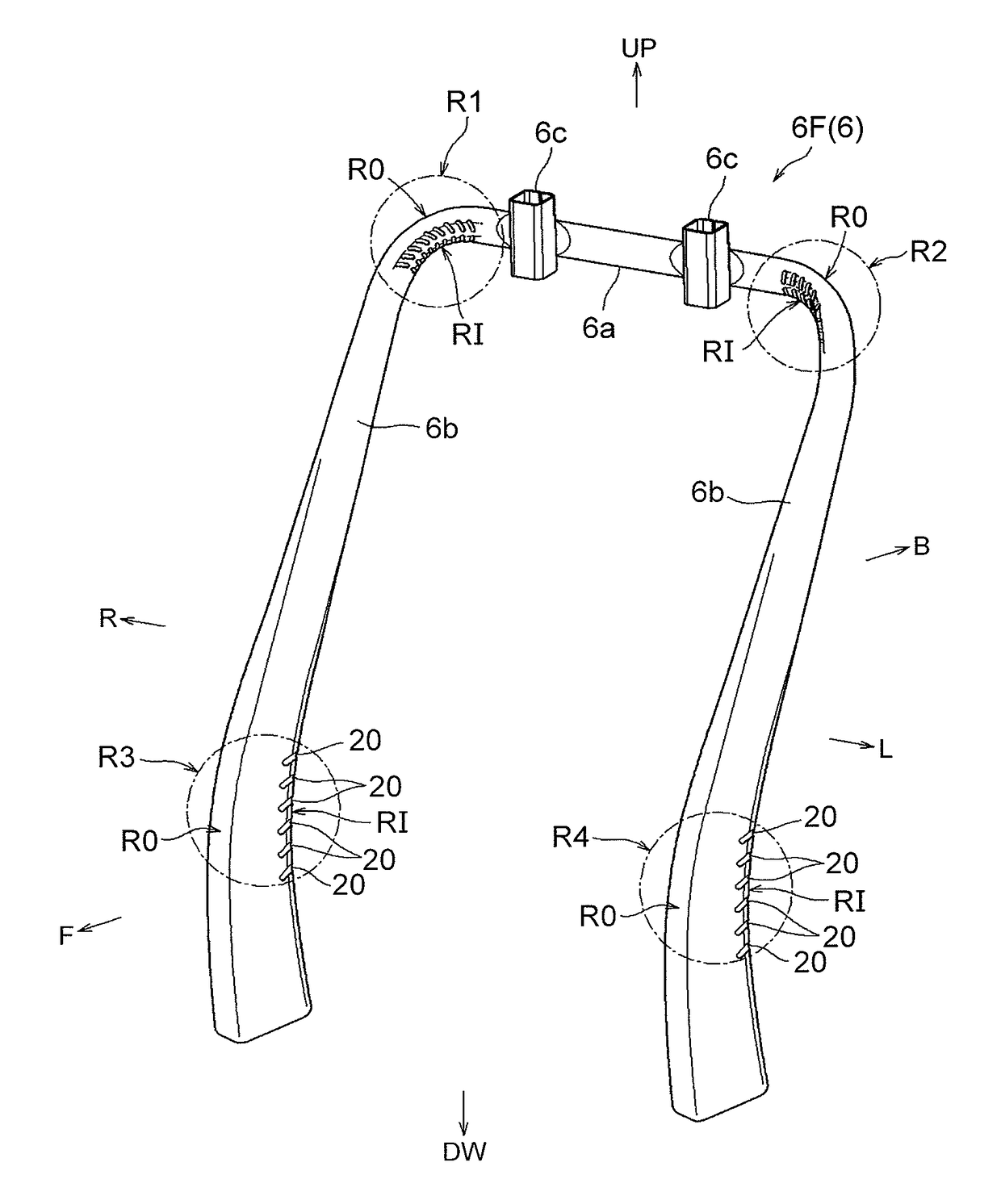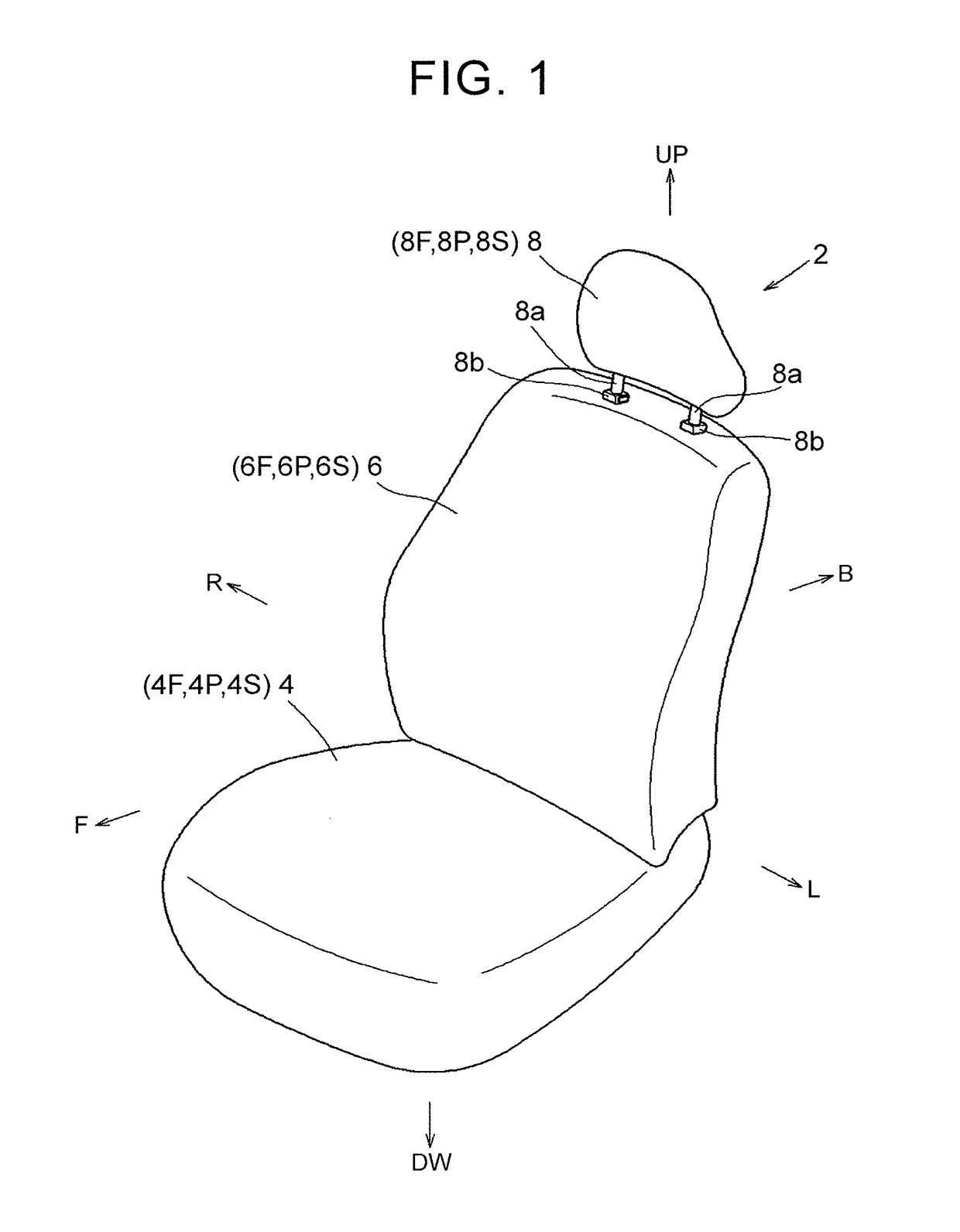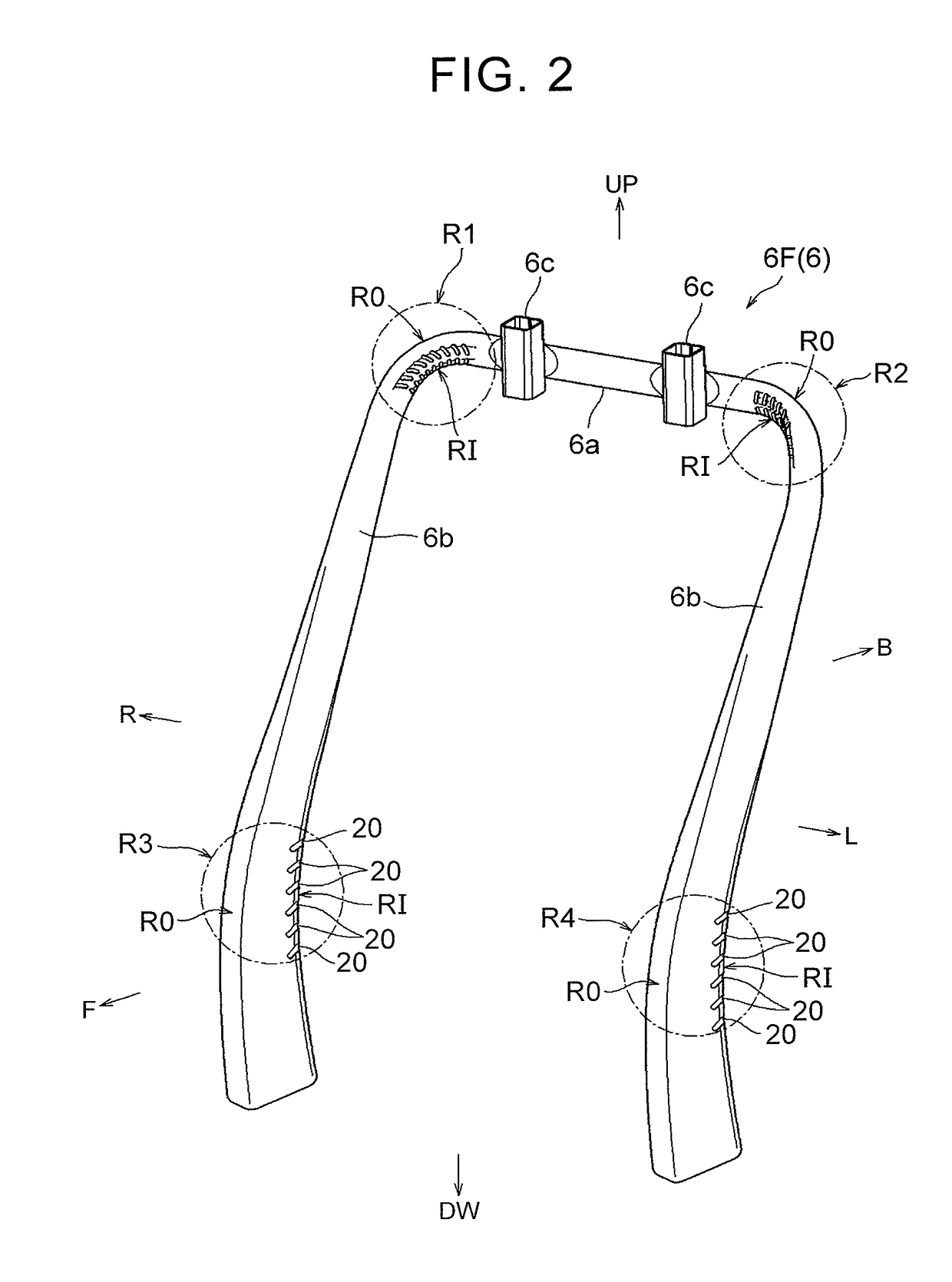Vehicle seat
a seat frame and seat technology, applied in the field of seat frames, can solve the problems of excessive deformation, receding deformation on the inner side, and breakage on the outer side, and achieve the effect of preventing excessive deformation of the seat frame and good balan
- Summary
- Abstract
- Description
- Claims
- Application Information
AI Technical Summary
Benefits of technology
Problems solved by technology
Method used
Image
Examples
Embodiment Construction
[0023]The following describes an embodiment for carrying out the present invention with reference to FIGS. 1 to 9. In each of the drawings, a reference sign F is assigned to a vehicle-seat forward side, a reference sign B is assigned to a vehicle-seat rearward side, a reference sign UP is assigned to a vehicle-seat upper side, and a reference sign DW is assigned to a vehicle-seat lower side, a reference sign R is assigned to a vehicle-seat right side, and a reference sign L is assigned to a vehicle-seat left side, appropriately. A vehicle seat 2 in FIG. 1 includes a seat cushion 4, a seatback 6, and a headrest 8. These seat components each includes: a seat frame (4F, 6F, 8F) forming a seat framework; a seat pad (4P, 6P, 8P) forming a seat outer shape; and a seat cover (4S, 6S, 8S) covering the seat pad.
[0024]In the present embodiment, a lower part of the seatback 6 is connected to a rear part of the seat cushion 4 in a rising and tilting manner, and the headrest 8 is disposed on an ...
PUM
 Login to View More
Login to View More Abstract
Description
Claims
Application Information
 Login to View More
Login to View More - R&D
- Intellectual Property
- Life Sciences
- Materials
- Tech Scout
- Unparalleled Data Quality
- Higher Quality Content
- 60% Fewer Hallucinations
Browse by: Latest US Patents, China's latest patents, Technical Efficacy Thesaurus, Application Domain, Technology Topic, Popular Technical Reports.
© 2025 PatSnap. All rights reserved.Legal|Privacy policy|Modern Slavery Act Transparency Statement|Sitemap|About US| Contact US: help@patsnap.com



